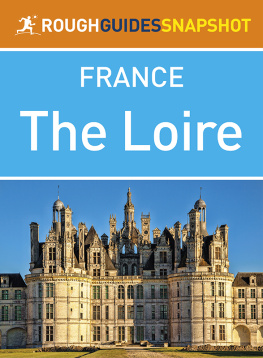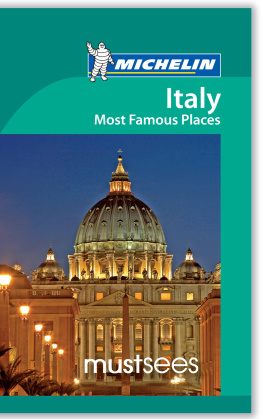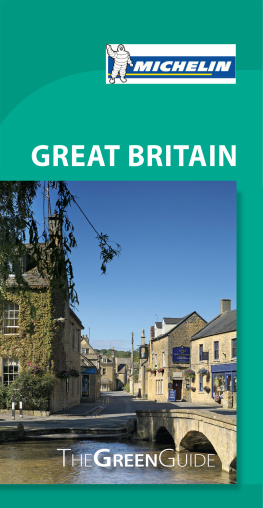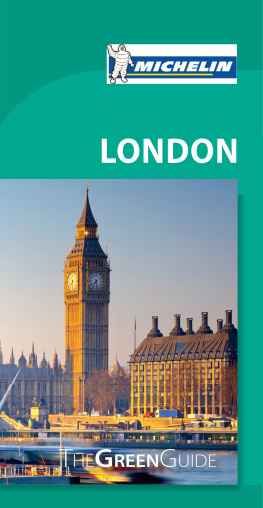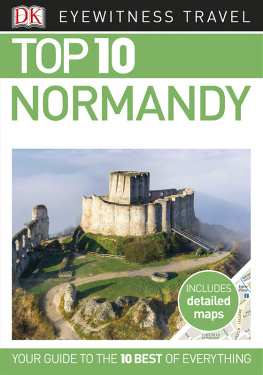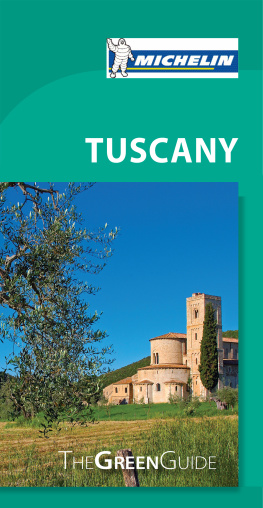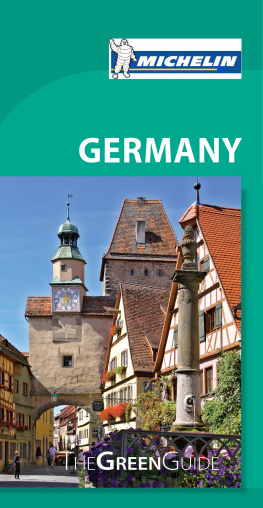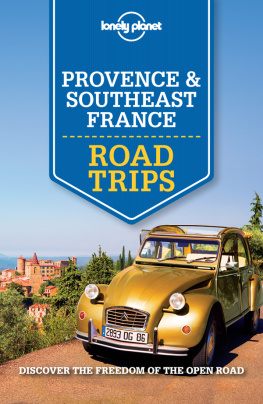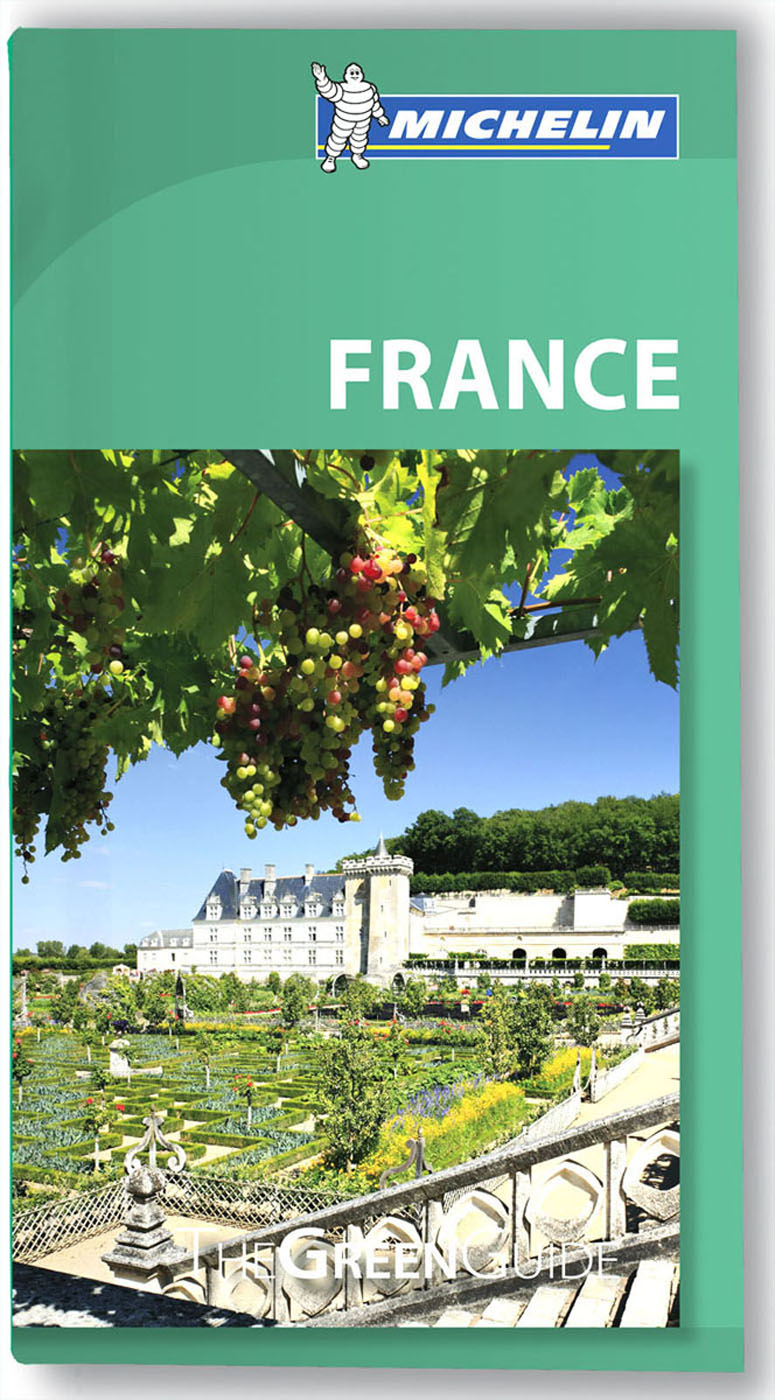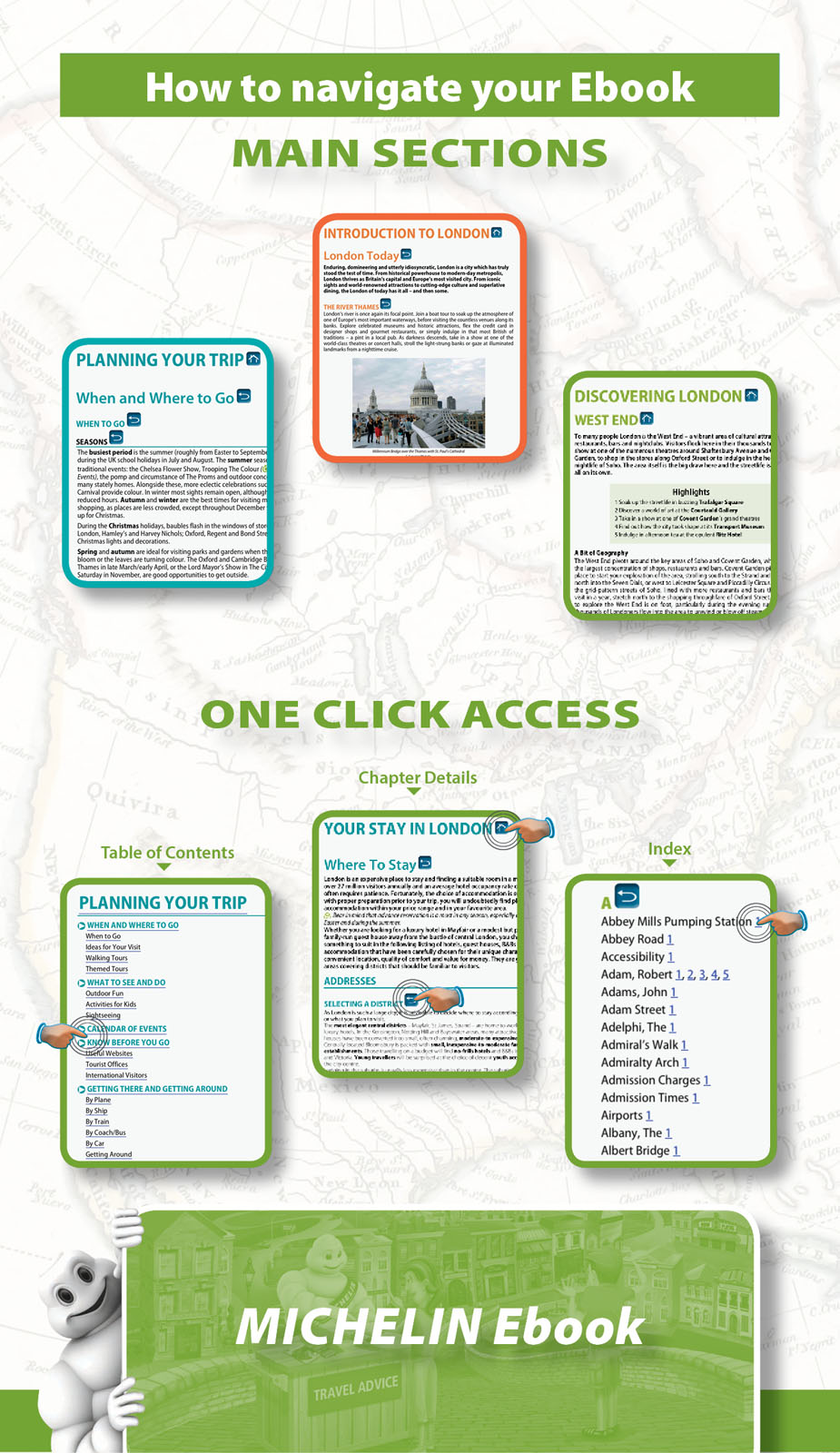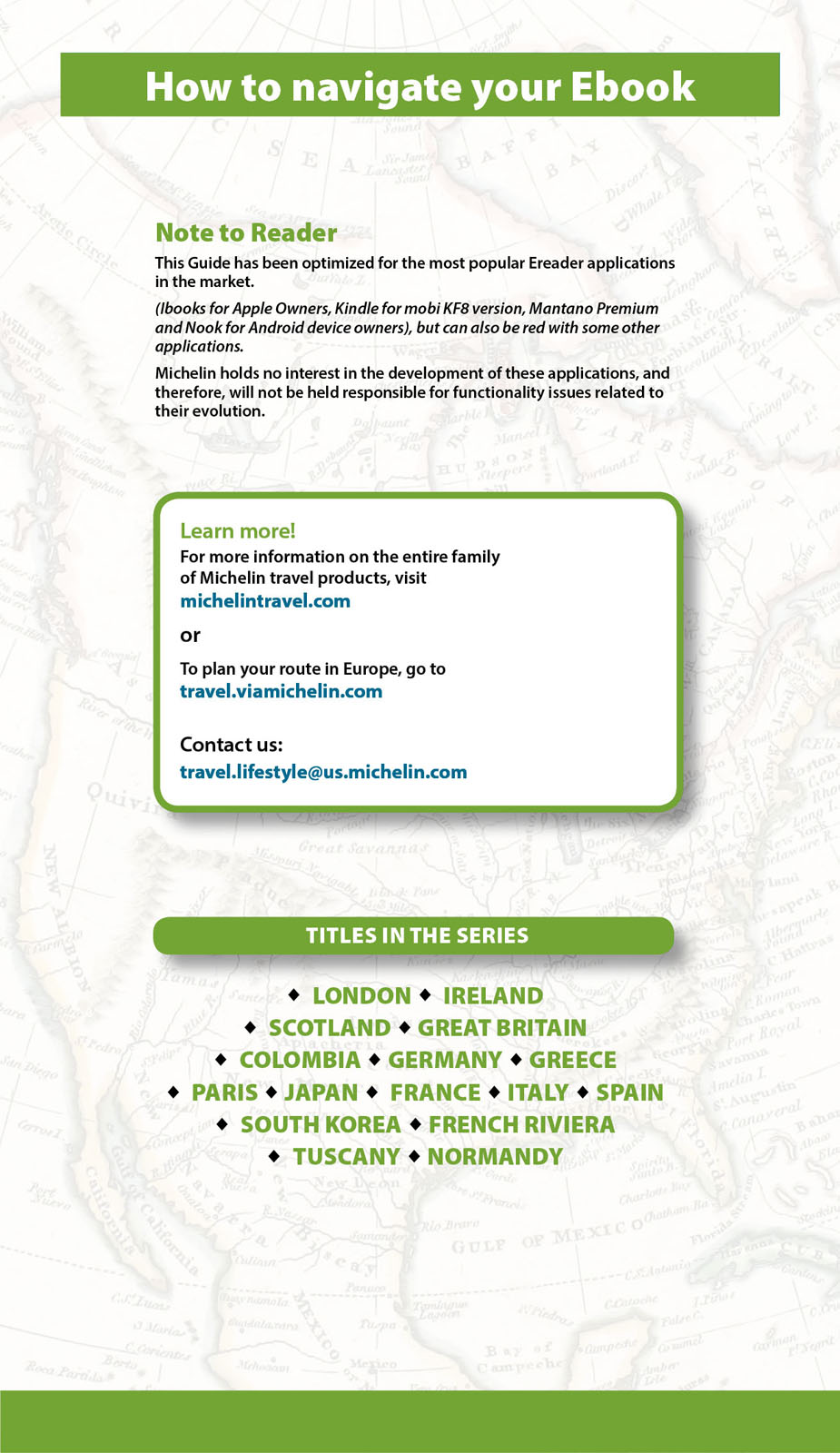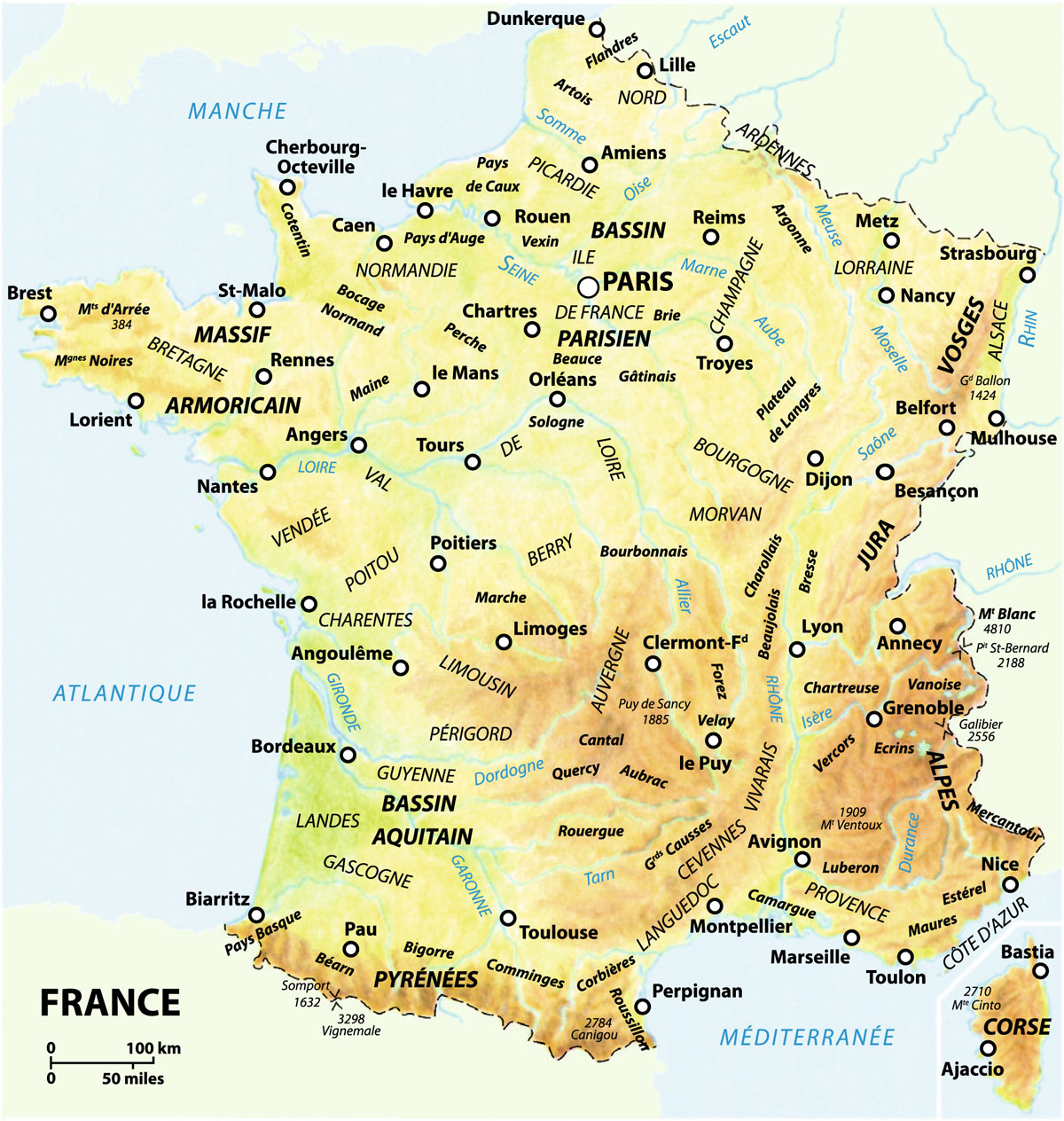HOW TO USE THIS GUIDE
PLANNING YOUR TRIP
The blue-tabbed PLANNING YOUR TRIP section at the front of the guide gives you ideas for your trip and practical information to organise it. Youll find tours, practical information, a host of outdoor activities, a calendar of events, information on shopping, sightseeing, childrens activities and more.
INTRODUCTION
The orange-tabbed INTRODUCTION section explores Frances Nature , geography and geology. The History section spans Megalithic culture through the Middle Ages to the present day. The Art and Culture section covers architecture, art, literature and music, while France Today delves into modern French lifestyle, people and cuisine.
DISCOVERING
The green-tabbed DISCOVERING section features Principal Sights by region, featuring the most interesting local Sights , Walking Tours , nearby Excursions , and detailed Driving Tours . Admission prices shown are normally for a single adult.
ADDRESSES
Weve selected the best hotels, restaurants, cafs, shops, nightlife and entertainment to fit all budgets. See the Legend on the cover flap for an explanation of the price categories. See the back of the guide for an index of where to find hotels and restaurants.
Sidebars
Throughout the guide you will find blue , orange and green -coloured text boxes with lively anecdotes, detailed history and background information.
w A Bit of Advice w
Green advice boxes found in this guide contain practical tips and handy information relevant to your visit or to a sight in the Discovering section.
STAR RATINGS aaa
Michelin has given star ratings for more than 100 years. If youre pressed for time, we recommend you visit the aaa , or aa sights first:
aaa Highly recommended
aa Recommended
a Interesting
MAPS
w Country map
w Principal Sights map
w Region maps
w Maps for major cities and villages
w Local tour maps
All maps in this guide are oriented north, unless otherwise indicated by a directional arrow. The term Local Map refers to a map within the chapter or Tourism Region. A complete list of the maps found in the guide appears at the back of this book.
CONTENTS
Le Puy-en-Velay
Theres a perfect side of France for every visitor to discover in this extraordinarily diverse country, from the flat plains of the Pas de Calais in the north to the majestic Alps and Pyrnes mountain ranges in the south; from a sleepy village ptanque game to the high fashion and buzzing cultural scene of Paris; splendid chteaux, stunning beaches, world-class skiing, justly famous food and wine la Belle France offers months of memorable travel, wherever and whenever you decide to visit. Bienvenue!
Alsace has a very Germanic character and many of its towns and villages reflect this. To the west of the Vosges mountains is Lorraine, which, despite being part of Germany for a while, is more French. Further west is Champagne, well known for its sparkling wine, and to the north, the heavily wooded Ardennes region.
The Atlantic Coast region extends from the River Loire in the north to the mighty Pyrnes in the south. It includes most of Aquitaine and Poitou-Charentes once the territory of the Dukes of Aquitaine which, for many years, was held by the English.
The unique volcanic landscape of the Massif Central is at the centre of the Auvergne region and the mountains vary from classic volcanic cones to more eroded rugged shapes. To the east, the land slopes down to the Rhne Valley, where the rivers Rhne and Sane converge on their journey south towards the great city of Lyon and eventually the Mediterranean Sea.
This rugged Celtic peninsula in the northwest, with its indented coastline and islands battered by the Atlantic, narrow inlets and sandy bays, has a mysterious past, which is reflected in the many prehistoric remains scattered around the region, such as the menhirs at Carnac. The separate identity and culture of the Bretons make this a fascinating part of France.
Formerly a great dukedom, Burgundy is placed on the great trade route linking the north with the Mediterranean. Coupled with the proceeds of its viticulture, this led to great wealth which resulted in amazing buildings like the Htel-Dieu at Beaune. The Jura in the Franche-Comt Region to the east consists of forested uplands and pasture which produces such culinary delights as Vacherin and Comt cheeses.
Renowned for its magnificent Renaissance chteaux such as Chambord and Chenonceau, the Loire Valley in the Centre Region is also referred to as the Garden of France due to the cultivation of vines, flowers and horticultural crops. The many chteaux actually sit on the banks of the River Loires tributaries, the Indre and the Cher, and date from the 16C onwards.
Referred to by the ancient Greeks as Kallist, meaning most beautiful, and by the French as Lle de Beaut , this mountainous island certainly lives up to its name. Totally unspoilt, it has both Italian and French influences. From the gulfs and ruggedness of the west coast to the promontory of the Cap Corse and the cliffs of Bonifacio, this is a truly exceptional place.
The Dordogne, or the Prigord, is very well known to visitors due to its agreeable climate, its impressive castles and cave systems, not to mention the meandering Dordogne river itself. The Berry and the Limousin to the north, on the other hand, are relatively undiscovered, and provide a great deal of interest, especially at Bourges (in Berry) and Limoges (in Limousin).
In the southeast of France, stretching from the Mediterranean to Lac Lman (Lake Geneva), the Alps are beloved by winter sports fans, but they also provide dramatic and beautiful mountain landscapes to explore when the snows are confined to the highest peaks. There are National and Regional Parks, which reflect the richness of this environment and allow access to these amazing landscapes.
The Cte dAzur or French Riviera runs along the Mediterranean coastline of southeast France from Menton to Cassis. What started as a popular winter health resort in the late 18C continues to draw thousands of tourists each year. Resort towns here include Cannes, Beaulieu-sur-Mer and St-Tropez. You cant beat its 300 days of sunshine per year and holiday atmosphere.
Stretching in an arc from the Rhne Delta to the Pyrnes and characterised by vineyards and popular beaches, the Languedoc Roussillon is steeped in history from the Roman era to the medieval. The Gorges du Tarn (Tarn Gorges) to the north are cut into the Grand Causses, from which there are amazing views from the corniche roads.
Famous for its ciders, cheeses and calvados, the former dukedom of Normandy boasts elegant coastal resorts, while cows, orchards and hedgrows provide rural charm. Rouens Gothic cathedral and the ruins of the abbey at Jumiges are two of Frances most impressive and important historic sights. More recent history is preserved at Caens Mmorial peace museum and the Normandy Landing Beaches.


